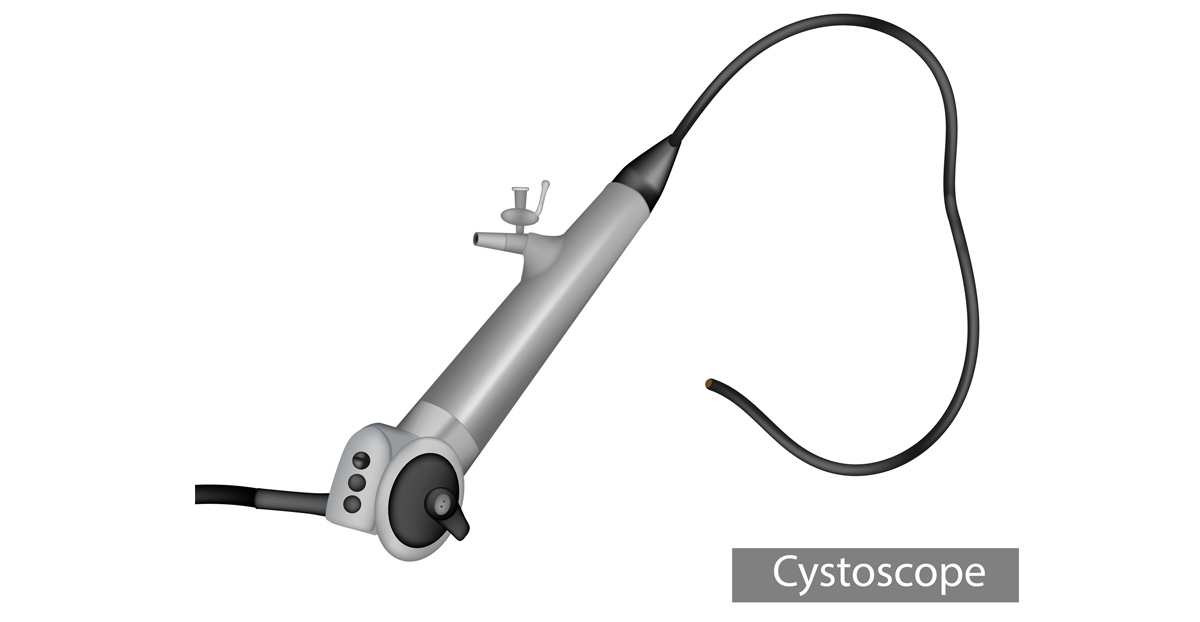

A cystoscopy is one way to develop a better understanding of what’s going on with the urinary system.
When a urologist needs to view the bladder or urethra, a common method is a procedure referred to as cystoscopy. It’s a visual examination that’s done by inserting a special lighted scope with a lens attached to one end, called a cystoscope, into the tube that carries urine out of the body from the bladder (urethra).
- Depending on the reason for the procedure, a cystoscopy may be done for either diagnostic or treatment purposes.
- In some cases, it’s used during outpatient procedures with a local anesthetic. Other times it’s done in a hospital under general anesthesia.
Reasons for a Cystoscopy
Since signs and symptoms associated with many issues that can affect the bladder and related parts are similar, a cystoscopy is often done to rule out certain possibilities and look for more detailed signs of a problem. For instance, a urologist may perform a cystoscopy to determine the specific reason for urinary incontinence. Additional reasons that a cystoscopy may be recommended include:
- Diagnosis of bladder conditions/diseases
- Determination of the extent of a urinary tract infection
- Removal of small bladder tumors
- Diagnosis of an enlarged prostate

How a Cystoscopy Is Done
Prior to starting the procedure, patients are asked to empty their bladder by urinating. A rigid or flexible cystoscope may be used. The process is similar for both types of scopes. The patient rests on a table on their back in a position that allows access to the urethra. Some type of sedative or anesthesia may be administered, or there may be no need for anesthesia.
A numbing jelly is used prior to the insertion of the scope to maintain comfort. The scope is inserted into the urethra. With flexible scopes, there are more options with patient positions. If the patient remains awake and aware, water is inserted through the cystoscope and questions are asked to determine how the patient feels when their bladder is full. Even if a patient isn’t awake, a sterile solution is usually used to inflate the bladder to provide a better view.
A special camera allows images of the bladder and urethra seen through the cystoscope to be viewed on a monitor. The tissue sample needed for a biopsy can also be collected during a cystoscopy. The procedure itself typically takes about 15 to 20 minutes. It may take longer if a tumor is being removed or some other type of procedure is being done through the scope.
After It’s Done
Most patients are able to return to their normal routine shortly a cystoscopy is completed. Infection, bleeding, and temporary discomfort are the most common side effects associated with a cystoscopy, although complications of this nature are considered rare. If there is any lingering discomfort or sensitivity, a urologist may suggest warm baths for a few days. Frequently drinking water following the procedure can help flush out the bladder to minimize the risk of irritation.
A cystoscopy is often combined with results from image tests and laboratory testing to achieve a more accurate diagnosis. When used for treatment purposes, a cystoscopy is an appealing option because many different minimally invasive procedures can be done through the scope.
